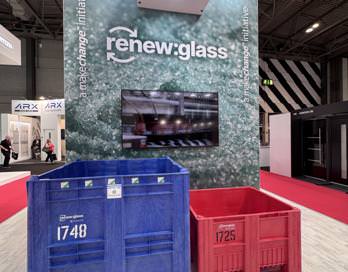How collaboration is powering decarbonisation in glass manufacturing

Neil Syder, managing director at Pilkington UK, reflects on how the glass industry’s push towards decarbonisation aligns with the latest Climate Change Committee advice and why collaboration is key.
The UK’s Climate Change Committee (CCC) recently issued a series of recommendations in its Seventh Carbon Budget, including measures aimed at decarbonising the manufacturing sector to help keep the UK within safe climate limits.
The report also sets a clear industrial challenge – cutting emissions by 78% by 2040 compared to 2023 levels.
For energy-intensive sectors like glass manufacturing, the decarbonisation roadmap is not only familiar, it’s already well underway. In 2021, the UK glass industry emitted 2.2 million tonnes of CO₂ – 2.7% of the UK’s industrial greenhouse gas emissions, or 0.5% of total UK GHG emissions. Decarbonisation efforts, though complex, are progressing through a shared commitment to innovation.
Decarbonising at 1,600°C
Architectural glass production relies on furnace temperatures of 1,600°C, traditionally fuelled by natural gas. In line with the UK’s net zero ambitions set in 2019, the sector has embarked on a multi-pathway journey to decarbonise.
Electrification, while a central theme in industrial decarbonisation, has limited applicability in high-heat, high-volume and high-quality sectors like architectural glass manufacturing.
Instead, hydrogen plays a critical role, potentially reducing industrial emissions by 7%, according to the CCC.
Pilkington UK achieved a world-first in 2021 by firing one port of a glass furnace using 100% hydrogen at its St Helens site, in collaboration with Progressive Energy and HyNet North West. The trial proved the feasibility of hydrogen firing for melting glass. Pilkington UK and Grenian Hydrogen’s project was recently shortlisted as part of the Hydrogen Allocation Round 2 (HAR2) government funding programme. This project will see the development of an on-site green hydrogen plant, powered by renewable electricity, to deliver low-carbon glass production from 2028.
Alternative fuels
Alternative fuels, expected to achieve a 5% emissions cut, is another active area for the glass sector. At Pilkington UK’s St Helens site, we worked with Ardagh Glass Packaging, Encirc, O-I and DSF Refractories & Minerals on a £6m trial, led by Glass Futures, exploring low-cost renewable fuels. Supported by the UK Government’s Industrial Fuel Switching Competition, the trial tested scalable decarbonisation options for energy-intensive industries.
Collaborative projects like this aim to benefit the entire sector and inspire wider adoption across heavy industry.
Capturing carbon, reimagining waste
The industry is also embracing carbon capture and resource efficiency.
While carbon capture has historically been limited to cement and chemicals, Pilkington UK hosted the first carbon capture trial of a glass furnace in the flat glass industry, led by C-Capture and Glass Futures and part-funded by the UK Department for Energy Security and Net Zero.
The project successfully separated CO₂ from furnace flue gases using solvent-based technology – marking a major proof of concept milestone for emissions reduction in glass manufacturing.
On the circularity front, we’re advancing resource efficiency through initiatives like Pilkington UK’s renew:glass programme. Currently, we’re working with customers and partners to recover pre-consumer cullet, glass offcuts and trimmings, for reuse in production, helping to reduce energy use and emissions.
Looking ahead, we’re exploring how to scale this further by incorporating post-consumer glass recovered from buildings. Recycling one tonne of cullet can save between 400–600 kg of CO₂, depending on processing complexity and proximity to the float plant. Yet globally, a very small fraction of post-consumer float glass is recycled back into new float glass, according to a joint report by the World Economic Forum and McKinsey & Company. It’s a challenge we’re addressing through new partnerships aimed at unlocking greater circularity in the future.
The power of collective action
In energy-intensive industries like glass, systemic change depends on collaboration.
At Pilkington UK, the makechange vision is driving progress to reduce carbon, waste, and energy use, while embedding circular principles across operations. We believe that true progress comes through shared movement. When the whole industry improves, then we can effectively move towards a sustainable future.
While electrification may offer promise in some areas, hydrogen is already being explored, with positive results. Our involvement in the Made with Hydrogen consortium demonstrates the real-world viability of hydrogen in industrial settings. Together, we’ve successfully showcased how hydrogen can be integrated into glass manufacturing at scale.
Pilkington UK is targeting a 30% emissions cut by 2030, backed by its Science Based Targets initiative, to ultimately reach net zero by 2050. This encapsulates the team’s ethos that the future of glass isn’t just about going faster, but about moving forward, together.
